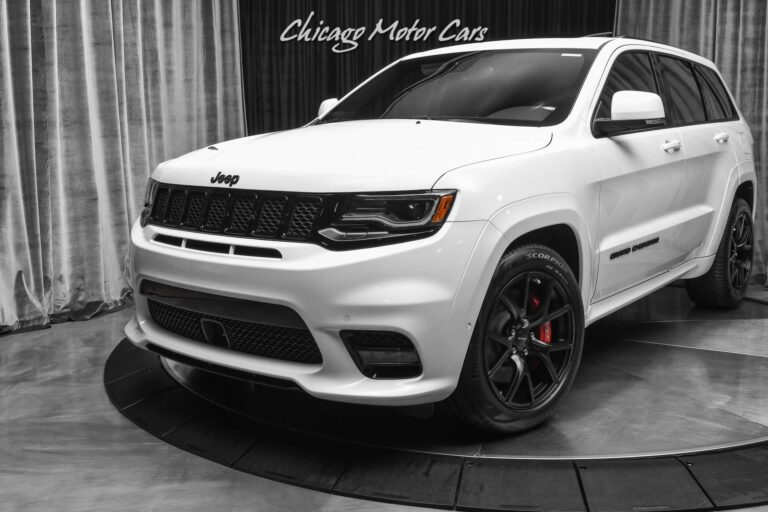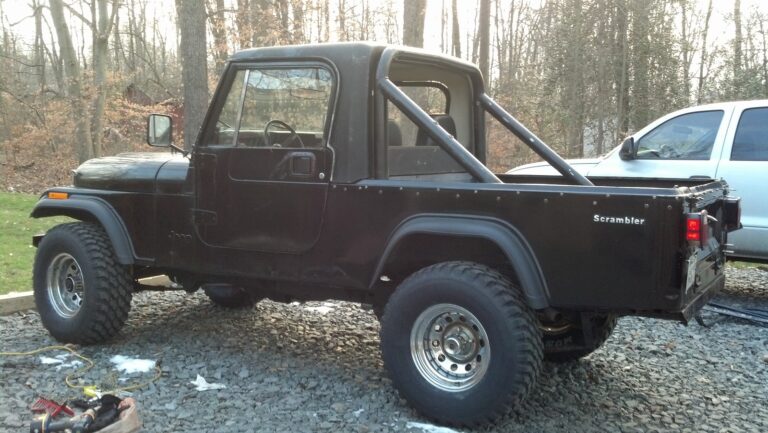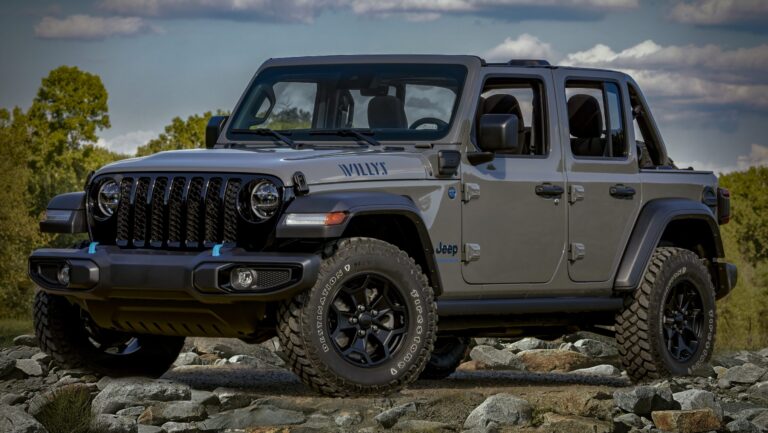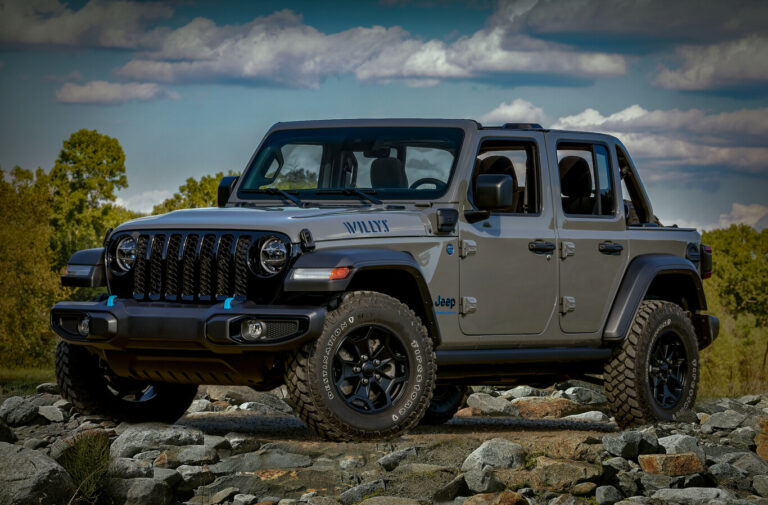Jeep TJ Frame For Sale: The Foundation of Your Off-Road Dream
Jeep TJ Frame For Sale: The Foundation of Your Off-Road Dream jeeps.truckstrend.com
The Jeep Wrangler TJ, produced from 1997 to 2006, holds a legendary status among off-road enthusiasts. Renowned for its coil-spring suspension, solid axles, and classic Wrangler aesthetics, the TJ offers an unparalleled blend of capability and customizability. However, like any vehicle of its age, the TJ is not without its vulnerabilities. One of the most critical components, and often the first to show significant wear or damage, is the frame.
A solid frame is the absolute backbone of your Jeep TJ. It’s what everything else attaches to: the engine, transmission, axles, suspension, body, and steering system. When you search for "Jeep TJ Frame For Sale," you’re not just looking for a piece of metal; you’re seeking the structural integrity that will determine the safety, performance, and longevity of your beloved vehicle. Whether you’re battling severe rust, recovering from an accident, or embarking on an ambitious custom build, understanding the nuances of purchasing a replacement TJ frame is paramount to bringing your Jeep back to life or transforming it into something extraordinary. This comprehensive guide will navigate you through everything you need to know about finding, evaluating, and acquiring a Jeep TJ frame for sale.
Jeep TJ Frame For Sale: The Foundation of Your Off-Road Dream
Why Buy a Replacement Jeep TJ Frame? Understanding the Need
The decision to replace a Jeep TJ frame is a significant one, driven by various factors that compromise the vehicle’s integrity or limit its potential. Recognizing these reasons will help you determine if a frame replacement is the right path for your TJ.
- Pervasive Rust and Corrosion: This is, by far, the most common reason TJ owners seek a replacement frame, especially in regions that experience harsh winters and road salt. Rust can severely weaken critical areas such as control arm mounts, skid plate mounts, shock mounts, and the main frame rails themselves, leading to dangerous structural compromise. While some minor surface rust is manageable, extensive perforation or flaking rust demands a more drastic solution than patching.
- Accident Damage: A severe collision can twist, bend, or crack the frame beyond economical repair. Even seemingly minor impacts can cause subtle alignment issues that are impossible to correct without frame straightening equipment, which may still not fully restore the frame’s original strength.
- Frame Twisting or Fatigue from Off-Roading: Aggressive off-roading, particularly with larger tires and heavy modifications, can subject the frame to extreme torsional stresses. Over time, this can lead to hairline cracks, metal fatigue, or even permanent twisting, compromising suspension geometry and overall vehicle stability.
- Custom Builds and Conversions: For enthusiasts looking to stretch their wheelbase, perform engine swaps (like an LS conversion), or build a completely custom rig, starting with a new or clean frame provides a perfect, uncompromised foundation. This allows for easier modification and ensures the frame can handle increased power or altered dimensions.
- Full Restoration Projects: When undertaking a meticulous, body-off restoration, replacing a worn or damaged frame ensures that the vehicle’s core is as sound as its beautifully restored exterior and interior.

Types of Jeep TJ Frames Available: New vs. Used
When searching for a Jeep TJ frame for sale, you’ll generally encounter two main categories: used/salvaged frames and new aftermarket reproduction frames. Each comes with its own set of advantages and disadvantages.
1. Used/Salvaged Frames
These frames are typically pulled from donor Jeeps that have been totaled due to non-frame-related damage (e.g., body damage, engine failure) or are simply being parted out.
- Pros:
- Cost-Effective: Generally much cheaper than a new frame, making them attractive for budget-conscious projects.
- Original Equipment: They are genuine Jeep frames, maintaining factory specifications.
- Cons:
- Condition Varies Widely: This is the biggest gamble. They can range from nearly pristine to severely rusted or previously repaired. Hidden damage (e.g., micro-cracks, subtle bends) is a significant risk.
- Age-Related Wear: Even a "good" used frame will have 18-27 years of wear, meaning some degree of rust or fatigue is almost inevitable.
- Logistics: Often require local pickup or expensive freight shipping from salvage yards or private sellers.
- Where to Find: Salvage yards, auto recyclers, online marketplaces (eBay, Craigslist), dedicated Jeep forums (e.g., JeepForum.com, WranglerForum.com), and social media groups.
2. Aftermarket/New Reproduction Frames
Several manufacturers produce brand-new frames specifically designed for the Jeep TJ. These are often built with improvements over the original.
- Pros:
- Brand New Condition: No rust, no previous damage, no hidden surprises.
- Improved Design/Materials: Many aftermarket frames use thicker steel, fully boxed sections for increased rigidity, and superior anti-corrosion coatings (e.g., e-coating, powder coating) compared to the factory frame.
- Perfect Starting Point: Ideal for custom builds or complete restorations where longevity and strength are paramount.
- Warranty: Often come with a manufacturer’s warranty.
- Cons:
- Significantly More Expensive: This is the primary drawback, often costing several thousand dollars.
- Bare Frame vs. Complete: Most are sold as bare frames, meaning you’ll need to transfer all mounts, brackets, and components from your old frame or purchase new ones. Some companies offer options for pre-welded mounts.
- Manufacturers: Notable manufacturers include Throttle Down Kustoms (TDK), Morris 4×4 Center (Quadratec often sells their frames), and sometimes other specialty fabricators.
- Considerations: Verify what’s included (e.g., body mounts, control arm mounts, shock mounts, transmission crossmember). Some frames might require minor fabrication for specific year models or setups.
Key Considerations When Purchasing a TJ Frame
Making an informed decision about a Jeep TJ frame for sale requires meticulous attention to detail.
- Condition is Paramount:
- Rust: Inspect every inch, especially around welds, control arm mounts (upper and lower), shock mounts, skid plate mounting points, and the frame rails themselves. Use a hammer to gently tap suspected areas – a solid thud is good, a dull thud or a hole indicates severe rust. Bring a magnet to detect body filler or patches.
- Bends/Cracks: Look for any signs of bending, twisting, or cracking, particularly near suspension mounting points or areas that would have absorbed impact in an accident.
- Previous Repairs: Examine any welds. Are they professional and clean, or do they look like amateur patches? Poorly executed welds can compromise structural integrity.
- Year Compatibility (1997-2006): While all TJ frames share the same basic dimensions, there can be minor differences between early (97-02) and late (03-06) models, such as exhaust hanger locations, transmission crossmember designs, or wiring harness clips. Confirm compatibility with your specific TJ year.
- Title and VIN Issues (for complete vehicles/frames with VIN): If you’re buying a complete vehicle primarily for its frame, ensure it has a clean title and that the VIN on the frame matches the title. This is crucial for registration purposes. For a bare replacement frame without a VIN, typically no title is required, but check your local DMV regulations.
- Shipping and Logistics: Frames are large, heavy, and awkward. Factor in significant freight shipping costs if buying remotely. Local pickup can save a lot of money but limits your options. Ensure the seller can properly package and load the frame.
- Bare Frame vs. Rolling Chassis: A "bare frame" is just that – the metal structure. A "rolling chassis" might include axles, suspension components, steering, and sometimes even a drivetrain, though this is less common for "frame for sale" listings and usually refers to a complete vehicle being parted out. Understand exactly what you are getting.
- Budget: Be realistic. A cheap frame might cost more in repairs and labor in the long run. Factor in not just the frame’s cost, but also shipping, any necessary rust treatment or painting, and potentially new hardware.
The Process of Swapping a Jeep TJ Frame: A Major Undertaking
A frame swap is an extensive and complex project. It’s not a weekend job for the average DIYer and often requires specialized tools and significant mechanical aptitude.
- Preparation: Secure a suitable workspace. Gather all necessary tools, including an engine hoist (for lifting the body), robust jack stands, a comprehensive wrench and socket set, cutting tools, welding equipment (if repairs are needed), and a well-stocked parts bin.
- Disassembly: This involves systematically disconnecting and removing everything from the old frame: the body (including interior, wiring, and fuel lines), engine, transmission, transfer case, axles, suspension components, steering system, brakes, and fuel tank. This is often the most time-consuming part.
- Component Transfer/Inspection: Carefully inspect all components removed from the old frame. This is the ideal time to replace worn-out parts like bushings, ball joints, control arms, shocks, and brake lines. Transfer good components to the new frame.
- Reassembly: Once the new frame is prepped (cleaned, painted, coated), begin reassembling by mounting the suspension and axles. Then, carefully lower the body onto the new frame, aligning all mounting points. Reconnect the drivetrain, steering, brakes, fuel system, and wiring.
- Final Checks and Alignment: Double-check every connection, bolt, and fluid level. Bleed the brakes. A professional wheel alignment is crucial after a frame swap to ensure proper handling and tire wear.
Disclaimer: This process requires significant mechanical skill and knowledge of vehicle systems. If you’re not confident, seek professional assistance. Safety is paramount; use proper lifting equipment and secure the vehicle appropriately.
Tips for a Successful Frame Purchase and Swap
- Be Patient: Finding the right frame, especially a good used one, can take time. Don’t rush into a purchase.
- Inspect Thoroughly (or Have it Inspected): If buying a used frame, always inspect it in person. If not possible, ask for dozens of high-resolution photos and videos from every angle, specifically highlighting common rust areas. Ask the seller to tap the frame with a hammer and record it.
- Ask Detailed Questions: Inquire about the donor vehicle (if applicable), its history, and any known issues with the frame.
- Factor in All Costs: Beyond the frame price, budget for shipping, sandblasting, painting/coating (if applicable), new body mounts, control arm bolts, and any worn-out components you’ll replace during the swap.
- Document Everything: Take photos and notes throughout the disassembly and reassembly process. This will be invaluable for putting everything back together correctly.
- Consult Resources: Utilize online Jeep forums, YouTube tutorials, and service manuals. The Jeep community is incredibly helpful.
- Consider Professional Help: If the task seems too daunting, consider hiring a reputable off-road shop or mechanic specializing in Jeeps for the frame swap.
Potential Challenges and Solutions
- Challenge: Finding a good condition used frame.
- Solution: Expand your search radius, utilize online freight services, or consider a brand-new aftermarket frame if budget allows. Network within local Jeep clubs.
- Challenge: High shipping costs.
- Solution: Look for local sellers, consider a road trip if the savings are substantial, or ask if the seller can deliver for an extra fee.
- Challenge: Hidden damage on a used frame.
- Solution: Thorough pre-purchase inspection is key. If buying sight unseen, rely heavily on detailed photos/videos and a trustworthy seller. If in doubt, walk away.
- Challenge: Technical difficulties during the swap.
- Solution: Invest in a factory service manual. Consult online forums and YouTube for specific challenges. Don’t hesitate to ask for help from experienced friends or a professional mechanic.
- Challenge: Registration issues after a frame swap.
- Solution: Research your local Department of Motor Vehicles (DMV) regulations regarding frame replacements and VIN transfers before you start the project. Some states are stricter than others.
Jeep TJ Frame For Sale: Estimated Price Table
Prices for Jeep TJ frames can vary significantly based on condition, type (used vs. new), manufacturer, and current market demand. The following table provides a general estimate.
| Frame Type | Condition/Notes | Estimated Price Range (USD) | Key Considerations |
|---|---|---|---|
| Used/Salvaged Frame | Poor/Rusted: Requires significant repair/welding | $300 – $800 | Only for experienced fabricators; hidden issues likely. Mostly scrap value. |
| Used/Salvaged Frame | Fair: Moderate surface rust, minor repairs possible | $800 – $1,500 | Requires thorough cleaning, rust treatment, and likely some patch welding. High inspection priority. |
| Used/Salvaged Frame | Good: Minimal surface rust, no major damage | $1,500 – $2,500 | Hard to find. May still need sandblasting and coating. Best value for used. |
| Used/Salvaged Frame | Excellent/Pristine: Rust-free, rare find | $2,500 – $3,500+ | Often comes from dry climate states. Very desirable, almost comparable to entry-level new frames. |
| New Aftermarket Frame | Bare Frame: No coatings, no mounts welded | $3,500 – $4,500 | Requires welding on all mounts, sandblasting, and coating. Cheapest new option. |
| New Aftermarket Frame | E-Coated/Powder Coated: Bare, but pre-finished | $4,500 – $5,500 | Comes with a durable rust-resistant coating. Still requires transfer/welding of specific mounts. |
| New Aftermarket Frame | Complete w/ Mounts: E-coated, most mounts welded | $5,500 – $7,000+ | Most expensive, but significantly reduces fabrication time. Ready for component transfer. |
| Full Donor Vehicle | TJ for Frame: Running/rolling, but damaged body/eng | $2,000 – $5,000+ | Often the best source for a good used frame if you can part out the rest or use other components. Comes with VIN. |
Note: These are estimated ranges and do not include shipping costs, which can add hundreds to over a thousand dollars depending on distance and carrier.
Frequently Asked Questions (FAQ) About Jeep TJ Frames
Q1: Are all Jeep TJ frames exactly the same?
A1: While the main dimensions are largely consistent across all TJ model years (1997-2006), there can be minor differences. These include variations in exhaust hanger locations, transmission crossmember designs (especially between manual and automatic or different engine types), and small brackets for wiring or fuel lines. Always verify compatibility for your specific year.
Q2: Can I just repair my rusted frame instead of replacing it?
A2: It depends on the severity. Minor surface rust or small, isolated holes can be repaired by a skilled welder using patch panels and rust inhibitors. However, widespread rust, significant perforation, or rust in critical load-bearing areas (like control arm mounts or suspension points) often indicates compromised structural integrity beyond safe repair. A professional assessment is recommended.
Q3: How much does a professional frame swap typically cost?
A3: The cost varies widely based on labor rates, the shop’s experience, and what components you’re transferring versus replacing. Expect to pay anywhere from $3,000 to $8,000+ in labor alone, on top of the frame cost and any new parts. DIY is significantly cheaper but demands substantial time and effort.
Q4: Do I need a title for a bare replacement frame?
A4: Generally, no. A bare frame without a VIN stamped on it is typically considered a replacement part. However, if the frame you purchase has a VIN (e.g., it was removed from a titled vehicle), you may need documentation to prove ownership, and your local DMV might require inspection or re-titling procedures to transfer the VIN from your old frame to the new one. Always check your state’s specific regulations.
Q5: How long does a Jeep TJ frame swap usually take?
A5: For an experienced DIY mechanic working consistently, a frame swap can take several weeks to a few months. For a professional shop, it might be completed in 1-2 weeks, depending on their schedule and the scope of work (e.g., if new parts are also being installed).
Q6: Is it better to buy a used frame or a new aftermarket frame?
A6: This depends on your budget and priorities. A new aftermarket frame offers superior strength, no rust, and a clean slate, but at a higher cost. A good used frame can be a cost-effective solution if you find one in excellent condition, but it carries the risk of hidden issues and age-related wear.
Conclusion: Rebuilding the Backbone of Your TJ
Searching for a "Jeep TJ Frame For Sale" signifies a commitment to your vehicle’s future. The frame is the literal foundation upon which your Jeep’s performance, safety, and longevity rest. Whether you opt for a carefully vetted used frame or invest in a robust new aftermarket alternative, the decision is a pivotal one that will define your Jeep’s next chapter.
By understanding the various types of frames available, diligently inspecting their condition, and planning for the comprehensive process of a frame swap, you equip yourself for success. While challenging, the reward of having a structurally sound, capable, and reliable Jeep TJ beneath you is immeasurable. With patience, research, and perhaps a little help from the passionate Jeep community, you can ensure your beloved TJ continues to conquer trails and turn heads for many years to come.




